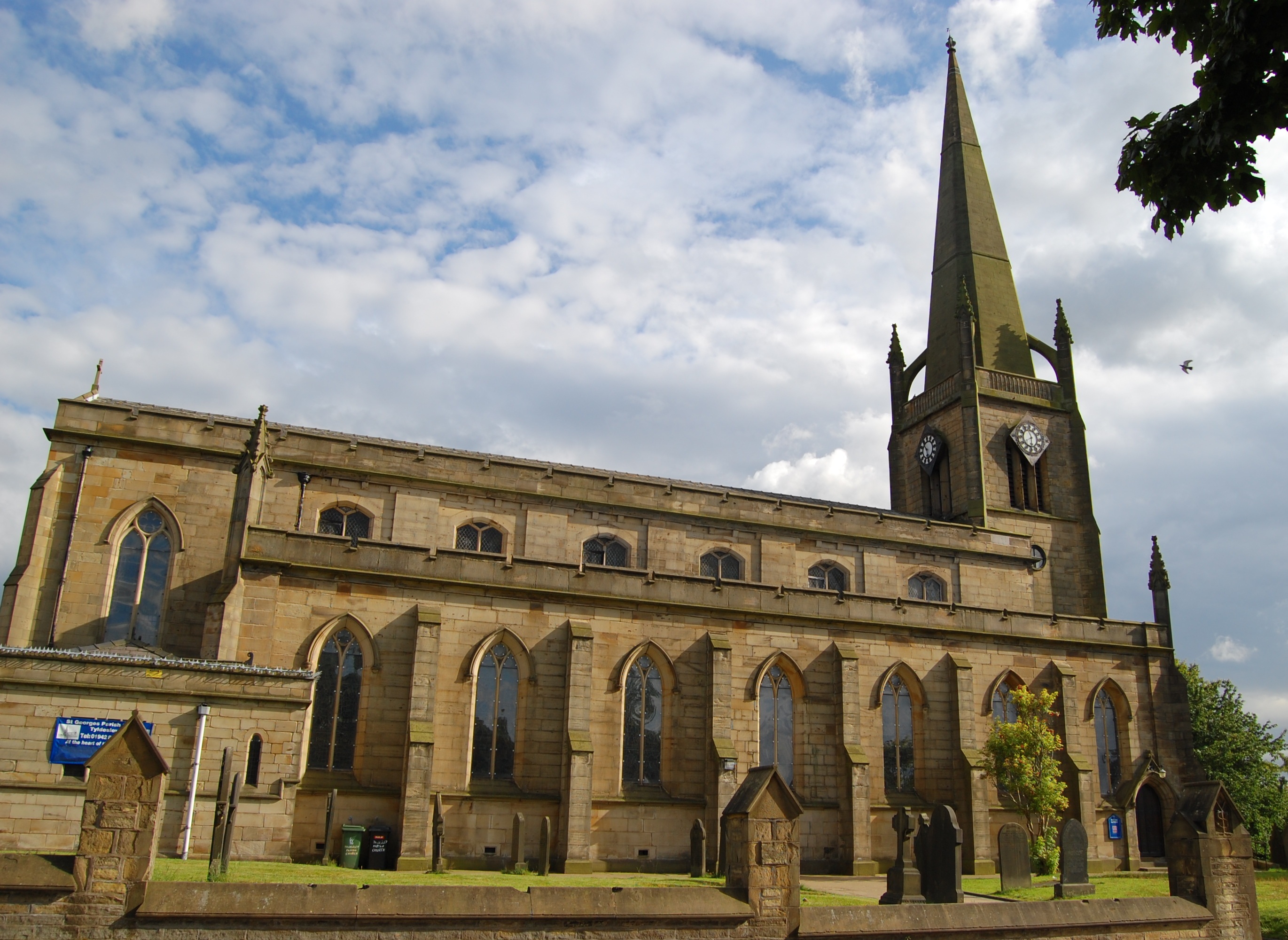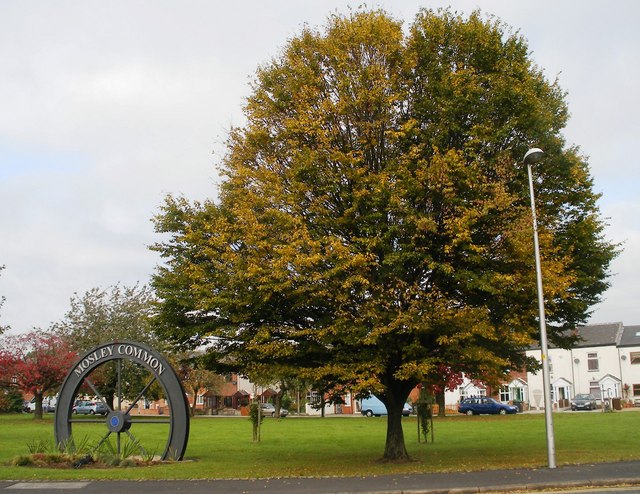Mosley Common, a suburb of TyldesleyFormer industrial town in the Metropolitan Borough of Wigan, in Greater Manchester. in the Metropolitan Borough of Wigan, Greater Manchester was historically in Lancashire. The ancient hamletRural settlement smaller than a village. on gently rising ground in the east of the township of Tyldesley cum Shakerley was in the ancient parishAncient or ancient ecclesiastical parishes encompassed groups of villages and hamlets and their adjacent lands, over which a clergyman had jurisdiction. of Leigh. The area of Mosley Common in 1747 was 34 acres (14 ha).[1]
Mining became the most important industry after the deep shafts of Mosley Common Colliery were sunk south of the Tyldesley LooplineRailway line built in 1864 to connect local collieries to the Liverpool–Manchester main line. in the 1860s. Dubbed a “superpit”, the colliery was a major employer for a century before it closed in 1968.
Geography
Mosley Common is on the eastern edge of the Metropolitan Borough of Wigan where it shares a border with the City of Salford. The A580, East Lancashire Road is the southern boundary and to the north is the Leigh-Ellenbrook guided busway
The Leigh-Ellenbrook guided busway is part of the Leigh-Salford-Manchester bus rapid transit scheme in Greater Manchester, England. It provides transport connections between Leigh, Tyldesley and Ellenbrook and onwards to Manchester city centre on local roads. and New ManchesterFormerly isolated mining community at the extreme eastern end of the Tyldesley township. and the Honksford Brook is its boundary with Tyldesley. The A577 road passes through the village and the B5232 links it with New Manchester and Ellenbrook
Residential suburb of Worsley in the City of Salford in Greater Manchester, England.. The underlying rocks are the coal measures of the Lancashire CoalfieldThe Lancashire and Cheshire Coalfield in North West England was one of the most important British coalfields. Its coal seams were formed from the vegetation of tropical swampy forests in the Carboniferous period more than 300 million years ago. covered with boulder clay.
History
The old name for the area was the Hurst or Tyldesleyhurst. Hyrst is Old English for wooded hill.[2] It was recorded as Mosseld Yard in 1301. Mosley could also mean the clearing on mossy ground. In 1695 the common was part of the Tyldesley Manor. Parr Bridge over the Honksford Brook was rebuilt in stone in 1698.[3]
A Sunday School was built in 1822 and enlarged in 1881. It was used for religious services before the church was built.[4] In 1885 the Countess of Ellesmere laid the foundation stone for St John the Evangelist ChurchActive church in Mosley Common that was built in 1886., a daughter church of Tyldesley Parish Church
Waterloo church dedicated to St George, completed in 1825 to serve the growing township of Tyldesley cum Shakerley., it cost £4,250.[5]
Industry
In 1831 Richard Worthington of Mosley Common built a weaving shed with 60 pairs of looms.[4] Parr Bridge Mill, built in 1859, was a weaving shed. It had several owners and continued working into the 1950s.[5]
The Bridgewater TrusteesCoal mining company on the Lancashire Coalfield with headquarters in Walkden near Manchester.‘ City and Gatley Pits were working at New Manchester in 1838.[6] Deep mining arrived when Mosley Common Colliery owned by the Bridgewater Trustees was sunk in the 1868. In 1896 Mosley Common, “Nos. 1, 2 & 5” pits employed 748 men underground and 85 surface workers. Coal was mined from the Brassey, Crumbouke and Seven Foot mines. “Nos. 3 & 4” pits employed 406 underground workers and 57 above ground. Coal was got from the Trencherbone mine. By 1919 the colliery employed more than 2,000 men.[7] It was part of Manchester CollieriesCoal mining company with headquarters in Walkden, Lancashire, formed in 1929 by the merger of a group of independent companies operating on the Manchester Coalfield. from 1929 to nationalisation in 1947[8]. It was a national show pit during the 1950s. Mosley Common closed in 1968.[9]


